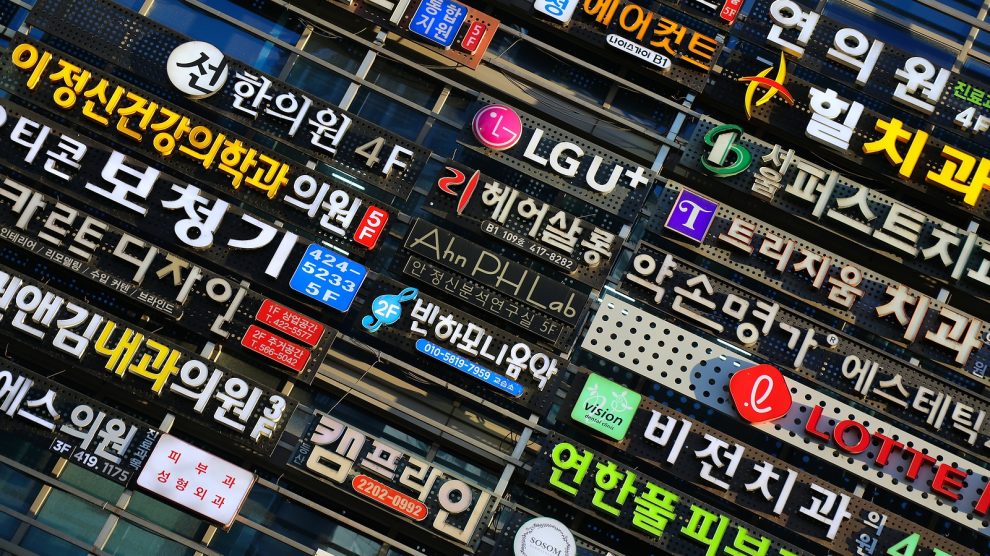New Korean investment in an Estonian developer of clean energy technology is likely to be one of many innovative collaborations between firms from the two countries.
Already a major investor throughout much of emerging Europe, particularly Poland where its firms have been crucial to the country’s development as a key manufacturer of batteries for electric vehicles, South Korea has now cast its net further north, looking to the Baltic states for attractive opportunities.
This week, Estonian President Alar Karis was in the South Korean capital Seoul to open an Estonian embassy and business hub that he says is aimed at enhancing bilateral relations, introducing Koreans to the Estonian economic environment, and Estonia as a favourable investment destination.
The business hub will also support the entry of Estonian companies into the South Korean market.
- New Ionway investment cements Poland’s position as key EV battery hub
- Poland’s blooming relationship with South Korea
- Learning from the Asian tigers: CEE needs an industrial policy for a new growth model
“As Northern Europe’s hub for knowledge and digital business, we are the gateway for the Koreans to Europe and the European Union market. I am delighted to open the Estonian embassy and business hub in Seoul to further strengthen our cooperation,” Karis said.
“The road to success across the whole gigantic area between the Baltic Sea and the Pacific Ocean lies in our resolute contribution to stability and security. Estonia and Korea, while distant geographically are very close in mindset. We have excellent relations. We share the same values—a rule-based international order, where each country has a right to determine its path,” he added.
Elcogen investment
As if to underline the point, Korea Shipbuilding and Offshore Engineering (KSOE), a member of HD Hyundai Group, this week announced investment worth 45 million euros in Elcogen, an Estonian developer of clean energy technology that delivers green hydrogen and emission-free electricity.
HD Hyundai’s investment follows an extensive period of testing the full range of technology available on the market, following which a research and development collaboration agreement was signed with Elcogen in January 2023, which was focused on further testing of Elcogen’s technology and development of systems.
Following the investment, HD Hyundai and Elcogen say that they intend to further strengthen their collaboration with a focus on marine propulsion systems and stationary power generation based on Elcogen’s solid oxide fuel cell (SOFC) and green hydrogen production based Elcogen’s solid oxide electrolyser cell (SOEC) technology.
The world’s most advanced fuel cell tech
The investment will be used to expand Elcogen’s manufacturing capacity as it continues to build a new factory facility in Tallinn, the Estonian capital, with a manufacturing capacity of up to 360MW to meet increasing demand for its products.
KSOE and Elcogen also intend to work together to manufacture systems in South Korea, and further strengthen the companies collaboration in SOFC and SOEC technology.
“There is a huge amount of pressure for heavy industries to decarbonise and meet net zero targets, not least maritime transport. We are delighted that HD Hyundai has built upon our strategic partnership to invest directly into Elcogen, recognising the key role our proprietary Solid Oxide technology will have in leading the world to net zero, providing a clear and external validation of Elcogen,” said Enn Õunpuu, CEO of Elcogen.
HD Hyundai says it chose Elcogen’s SOFC and SOEC technology because of its flexibility to produce electrical energy from a variety of fuels such as hydrogen, natural gas, ammonia, methanol, and biofuel, as well as its suitability for ship engines and cogeneration as it is highly energy efficient and can use waste heat generated from high-temperature operation.
Elcogen’s tech is considered the most advanced among all fuel cells developed to date.
Founded in 2001, the firm has manufacturing facilities in Estonia and Finland that have served 160 customers in 30 countries.
Lessons from the Asian tigers
Earlier this year, a major report suggested that as they seek to move away from the ‘extended workbench’ model, the states of Central and Eastern Europe and the Baltics could learn from the experiences of the East Asian tiger economies, such as South Korea.
Since the early 2000s, the EU member states of Central and Eastern Europe (EU-CEE) have achieved impressive economic catch-up. However, the previously successful model of taking over labour-intensive production steps as an ‘extended workbench’ of Western corporations has reached its limits.
Combined with major structural changes such as decarbonisation and digitalisation, this means a new, innovation-based economic model is necessary. “Only then will these states be able to catch up with Western Europe in terms of productivity and living standards,” said Zuzana Zavarská, an economist at the Vienna Institute for International Economic Studies (wiiw) and co-author of the report.
“Taiwan and South Korea have shown how effective a well-designed strategic industrial policy can be. Even though there are many differences with the EU members of Central and Eastern Europe the success stories of East Asia offer valuable inspiration,” said Zavarská.
Unlike many news and information platforms, Emerging Europe is free to read, and always will be. There is no paywall here. We are independent, not affiliated with nor representing any political party or business organisation. We want the very best for emerging Europe, nothing more, nothing less. Your support will help us continue to spread the word about this amazing region.
You can contribute here. Thank you.







Add Comment